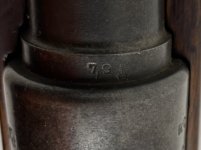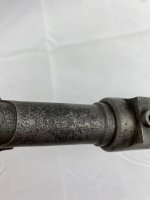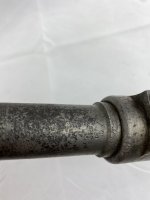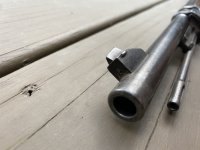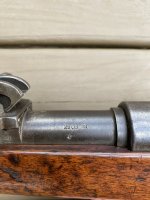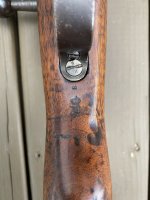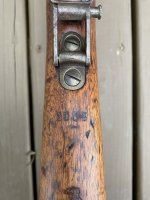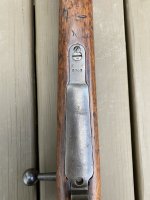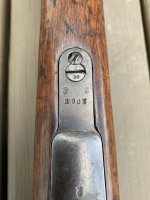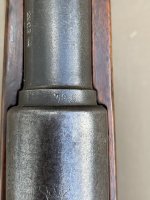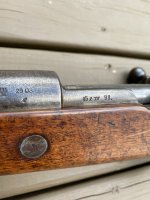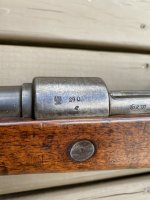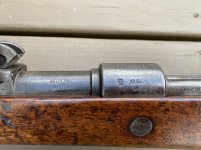mauser1908
Senior Member
I just got this wayward 1914 Spandau. Admittedly, I only bought it because it was counterbored and after 10 years that was still a void. With that said, the photos were poor so I really didn't know what I was getting into until it arrived. This gun ended up being a heavily overhauled Köln rework, the barrel and receiver are really the only original parts left.
Every Köln rework I've personally owned has been minor, rear sight replacements, sometimes a stock repair, all in all, pretty minor. Or if the work was more substantial, the gun was polluted by another depot. Essentially, they never provided a good benchmark on the procedure for renumbering. This rifle only passed through Köln and can serve as an excellent benchmark on their renumbering conventions.
Procedure:
1. Only stocks and magazines are renumbered. I presume they probably did bolts too, this rifle's bolt is m/m.
2. The method of renumbering was over-stamping.
3. If any of the digits of the donor part match they would remain. Additional numbers would be added or if necessary over-stamped. An example is the triggerguard on this gun, 2 (over-stamped) 90 (original to the part) 3 (over-stamped).
4. An additional acceptance character was added behind the barrel serial number. This might relate to some sort of testing after the counter bore was completed. Maybe it's an indication that the accuracy was restored to an acceptable standard?
5. The presence of patina on the receiver and the total lack of blue/pitting under the woodline would, to me, might indicate a wartime rust removal.
Long term, I think trying to nail down the procedure of each depot would be a good project as more "single depot" guns surface. I have a few in my collection that fit this bill. Additionally, probably half of mine have some sort of inconsequential work from a single depot. Chris posited a good theory in one of our conversations; we were discussing why you see so many rifles with minor work that could have been done at the unit level. For example, I have a few that are marked but are matching guns with no visible work. His idea was that rifles may have been turned-in in groups when units rotated out of the line on R&R or furlough. I think that's a good theory.
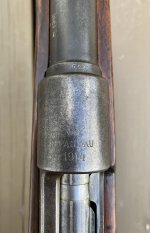
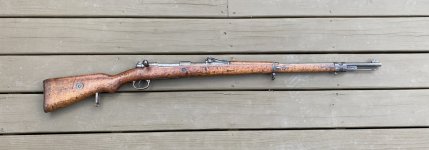
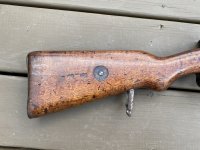
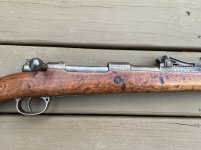
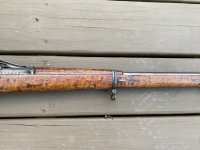
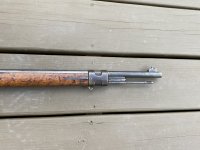
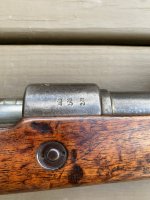
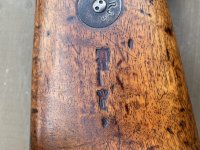
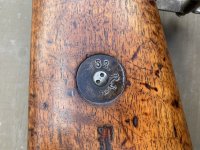
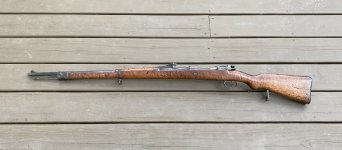
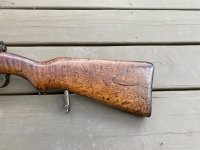
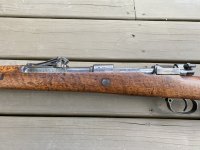
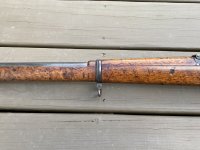

Every Köln rework I've personally owned has been minor, rear sight replacements, sometimes a stock repair, all in all, pretty minor. Or if the work was more substantial, the gun was polluted by another depot. Essentially, they never provided a good benchmark on the procedure for renumbering. This rifle only passed through Köln and can serve as an excellent benchmark on their renumbering conventions.
Procedure:
1. Only stocks and magazines are renumbered. I presume they probably did bolts too, this rifle's bolt is m/m.
2. The method of renumbering was over-stamping.
3. If any of the digits of the donor part match they would remain. Additional numbers would be added or if necessary over-stamped. An example is the triggerguard on this gun, 2 (over-stamped) 90 (original to the part) 3 (over-stamped).
4. An additional acceptance character was added behind the barrel serial number. This might relate to some sort of testing after the counter bore was completed. Maybe it's an indication that the accuracy was restored to an acceptable standard?
5. The presence of patina on the receiver and the total lack of blue/pitting under the woodline would, to me, might indicate a wartime rust removal.
Long term, I think trying to nail down the procedure of each depot would be a good project as more "single depot" guns surface. I have a few in my collection that fit this bill. Additionally, probably half of mine have some sort of inconsequential work from a single depot. Chris posited a good theory in one of our conversations; we were discussing why you see so many rifles with minor work that could have been done at the unit level. For example, I have a few that are marked but are matching guns with no visible work. His idea was that rifles may have been turned-in in groups when units rotated out of the line on R&R or furlough. I think that's a good theory.














Last edited:

